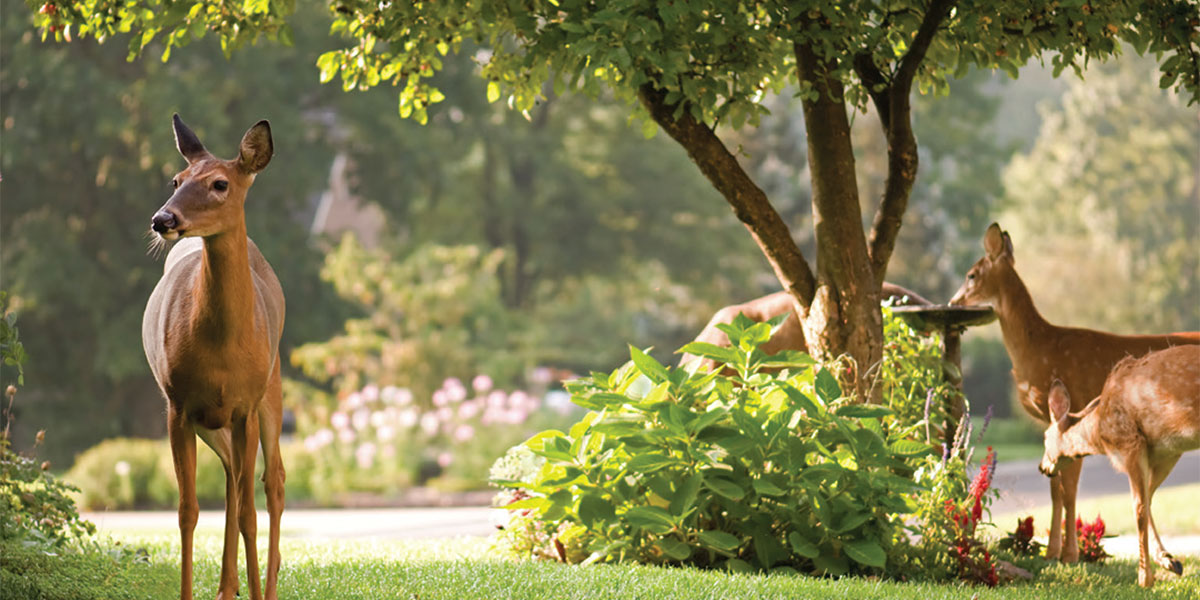 From their abilities to optimize water usage and provide habitats for pollinators to their effects on controlling erosion and improving air quality, native plant species are sought by Smith Mountain Lake homeowners who are eager to reap those benefits.
From their abilities to optimize water usage and provide habitats for pollinators to their effects on controlling erosion and improving air quality, native plant species are sought by Smith Mountain Lake homeowners who are eager to reap those benefits.
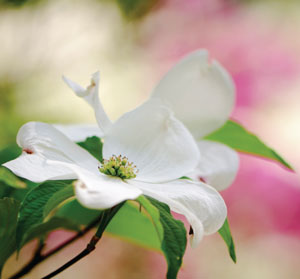 Especially when balancing factors such as deer pressure and the steep slopes on some lakefront properties, finding the right native plants to augment a yard requires careful analysis and decision-making.
Especially when balancing factors such as deer pressure and the steep slopes on some lakefront properties, finding the right native plants to augment a yard requires careful analysis and decision-making.
Seven Oaks Landscape & Hardscape, originally founded by Dave Bower as Dave’s Landscaping, has been based in Franklin County for more than 30 years. The company has about 75 employees and focuses on the design, building and maintenance of residential landscaping.
Galen Layman has been with the company for 18 years and is in charge of purchasing plants from vendors for Seven Oaks construction projects. Layman is keen on weighing his options when selecting native plants for a customer. He zeroes in on using trees, shrubs and groundcovers. With flowers, another landscaping cornerstone, there aren’t many true natives that are readily available. He said that many plant breeders will often take native varieties and breed them up for pest resistance, but then they’re no longer a true native. And with flowers, unless the customer has mitigating circumstances, they can become a buffet for deer.
“We have significant deer issues in most places around Smith Mountain Lake — and in some areas, they’ll eat everything, but in other sections of the lake, they’ll only eat specific plants,” Layman said. “Some plants, like day lilies and hosta, deer will walk miles to eat those. So we have to stay away from those types of plants unless we’re in a fenced garden area.”
“Native” may be a term that’s used loosely by some retailers and landscapers, but there are many options for true native plants around the lake if people choose them. Layman talks about 10 such plants that stand out:
Trees
Native trees provide aesthetic appeal for lake-area homes, and any tree that thrives is going to help tremendously with erosion. Even if a tree has a tap root to help anchor it, the feeder roots are in the top 12 inches of soil, so for practical purposes, most trees are shallow-rooted. “That’s where the plant is getting nutrition,” Layman explains, “not from 3 to 4 feet in the ground.”
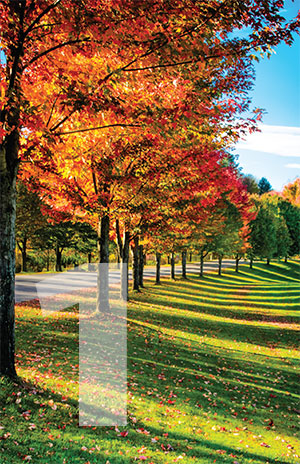 1. MAPLES: RED MAPLE AND SUGAR MAPLE
1. MAPLES: RED MAPLE AND SUGAR MAPLE
Maples grow fairly rapidly and have a dense canopy, providing good shade cover within about 15 to 20 years. They are water-loving, making them an exceptional choice for erosion control. These trees excel in both full and partial shade and are well-known to produce vibrant colors in autumn. Perhaps most advantageous to both the Bedford and Franklin County sides of the lake is that Red and Sugar Maples, which can grow between 40 and 100 feet tall, tolerate compacted and clay soils well.
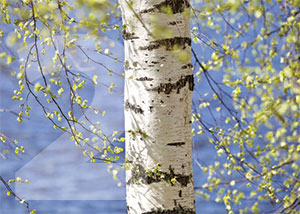 2. RIVER BIRCH
2. RIVER BIRCH
River Birch grows quickly and is among the most widely adapted Birches in the Eastern U.S. Its strength is not as a shade tree, but it fits in very well into ornamental landscaping at SML. According to Clemson University Extension, the popularity of Birch comes from year-round interest in its peeling or exfoliating two-toned bark. On younger trunks and branches the pinkish to light brown bark curls and peels away in thin papery sheets to reveal lighter-colored, creamy tan to reddish-brown inner bark. On older trees, the bark develops reddish- to grayish-brown to almost black scaly bark. This tree typically reaches 30 to 60 feet in height.
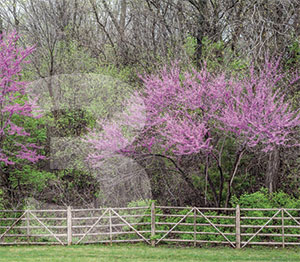 3. EASTERN REDBUD
3. EASTERN REDBUD
Due to the rosy-pink, pea-like flowers that bloom in between April and May on the Eastern Redbud, this is one of the most asked-for flowering plants at Seven Oaks. The deciduous tree has a flat-topped to rounded growth habit, and large heart-shaped leaves. It is known for being able to be trained to have a single trunk or to grow multi-stemmed, and often climbs to 20 to 30 feet tall. The Eastern Redbud will succeed in various kinds of soil and likes either full sun or partial shade.
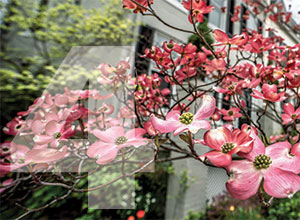 4. DOGWOOD
4. DOGWOOD
The ornamental Dogwood is another sought-after tree at Seven Oaks. “Most people know what they are, and they’re really pretty when they bloom,” Layman explains. The beautiful parts of Dogwoods aren’t actually the flowers but are bracts, a leaf-like structure beneath the flower. They are at their peak in April or May, and around Smith Mountain Lake will be white or pink, while the flowery parts are the yellowish cluster at the center of the bracts. Dogwoods can get to 20 feet in height and are considered an “understory” species, which means they naturally grow below taller trees in a forest and, therefore, are shade tolerant.
Shrubs
In landscape design, shrubs serve an important function as the “walls, ceilings, and floors of a landscape,” according to Virginia Cooperative Extension. Their size and texture visually augment landscapes, while they can also produce fruit and enhance a lawn’s fragrance.
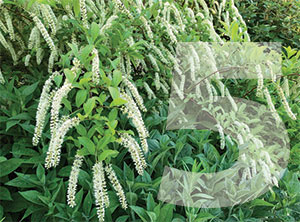 5. VIRGINIA SWEETSPIRE
5. VIRGINIA SWEETSPIRE
The semi-evergreen Virginia Sweetspire can grow up to 8 feet tall, have great fall color and do well along waterways. They are considered more of a naturalizing plant, meaning that they can spread through rhizomes (underground lateral shoots) and do well at plugging gaps in a yard. The Sweetspire is good for pollinators and can adapt to a variety of soil conditions.
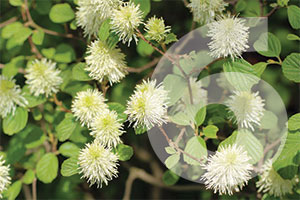 6. FOTHERGILLA
6. FOTHERGILLA
Selected often by Seven Oaks because of its deer resistance, Fothergilla is another shrub that flowers beautifully and creates a pleasant space for pollinators. Fall color on this shrub is long-lasting and can range from yellow and orange to scarlet and reddish-purple. According to the University of Maryland Extension, Fothergilla’s fall colors are best with more sun than shade, but it is also less resilient to drought in full sun so the recommendation is often to use it in spaces with partial shade. Depending on the species, Fothergilla will reach anywhere from 3 to 10 feet tall.
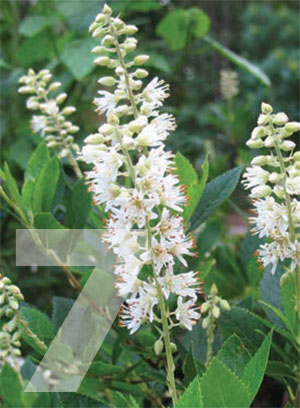 7. CLETHRA
7. CLETHRA
Clethra is a good plant for shady wet sites where it can grow to 8 feet tall. But despite its highlights — including how its dense, glossy green foliage can turn yellow in mid-October, as well as its ability to attract pollinators — it has a major drawback of not being deer-resistant. “If you’re in a heavy deer pressure area, they’ll absolutely obliterate the plant,” Layman says. As with the Virginia Sweetspire, the Clethra can spread by sending up new shoots from rhizomes to form a small thicket.
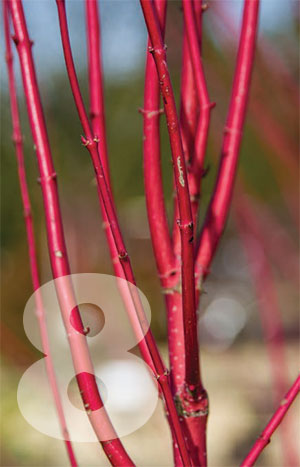 8. RED OSIER DOGWOOD
8. RED OSIER DOGWOOD
Layman cautions the Red Osier Dogwood is a “maybe eat” for deer, so it is recommended for areas where deer activity is lower. This shrub is named because of the bright red color of its stems, while the tops of its leaves and its new twigs have fine hairs on them that create an almost silky feeling. The Red Osier Dogwood only grows a few feet tall, and though it prefers organically rich soil, it can tolerate wet and heavy clay soil.
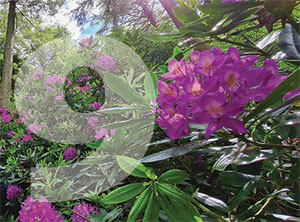 9. RHODODENDRON
9. RHODODENDRON
If you’ve ever driven along the Blue Ridge Parkway, you are likely familiar with Rhododendron. This plant is best grown in acidic, moist and well-drained soil. It also loves shady areas (dappled shade is preferred) as full sun may result in leaf scorch. Rhododendron are great for bumblebees, butterflies and hummingbirds, and known to host dozens of caterpillar species. Their leaves are large, leathery and evergreen, and can grow 5 to 15 feet tall.
Groundcover
Low-growing groundcovers help to complete the aesthetic look of a landscape. Most types of groundcovers are not intended to be walked on, as that can damage the plants. They can fill uneven or odd-spaces, control erosion, mitigate weeds and reduce general maintenance on a property. Layman notes that a lot of groundcovers are not native to the Smith Mountain Lake area, and even among the ones that are native, many of them don’t actually survive very well.
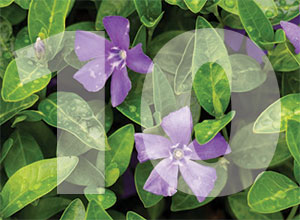 10. VINCA MINOR
10. VINCA MINOR
The real standout performer at the lake, according to Layman, is Vinca Minor, known more commonly as Periwinkle. This broad-leafed evergreen groundcover grows to be about 4 inches tall but can spread as much as 8 feet. It’s known to be invasive in some regions, but Layman said he’s never experienced that at SML. Periwinkle has 1-inch blue-violet flowers in early spring and does best in light shade — but it will tolerate full sun and full shade.
While there are many considerations when choosing native plants for a Smith Mountain Lake home, there are sufficient options for homeowners to enjoy a beautifully and functionally crafted design. ✦
